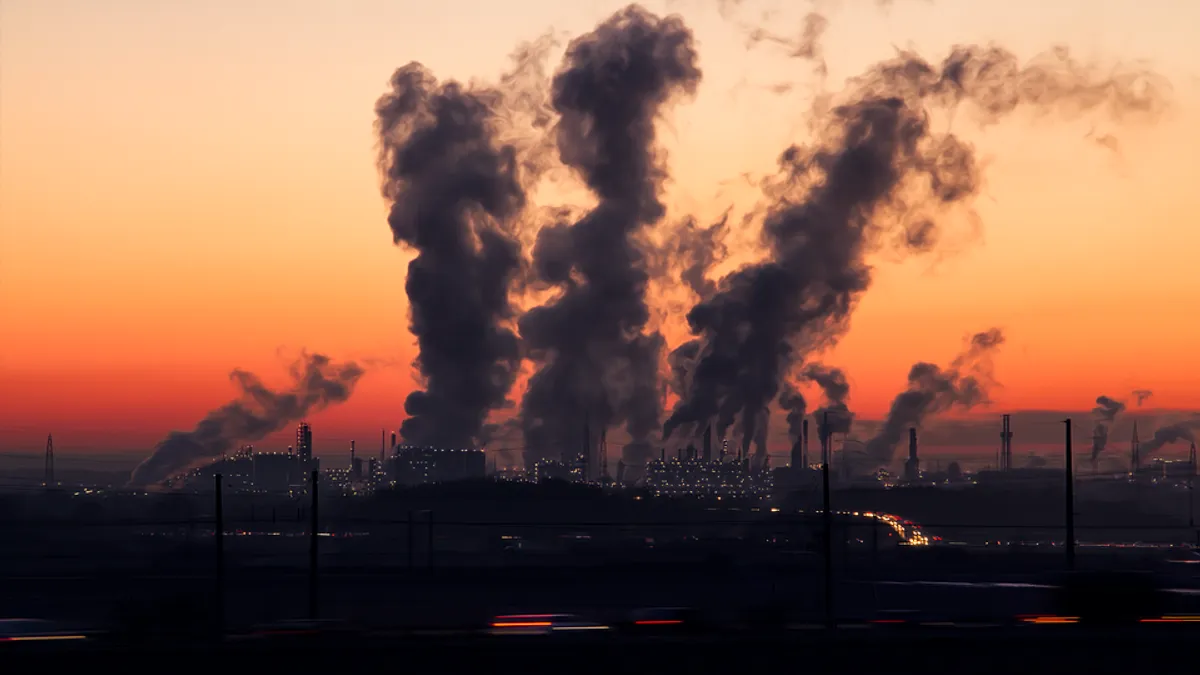Dive Brief:
- The American Lung Association on Wednesday released its 19th annual State of the Air report, which ranked U.S. cities based on ozone and particle pollution levels from 2014 through 2016. Los Angeles topped the list of most ozone-polluted cities, with six other California cities/regions following right behind: Bakersfield, Visalia-Porterville, Fresno-Madera, Sacramento-Roseville, San Diego-Carlsbad and Modesto-Mercede.
- The Phoenix, AZ region, Redding-Red Bluff, CA and New York-Newark, NY-NJ rounded out the top ten list, respectively. Meanwhile, Anchorage, AK; Bangor, ME and Bellingham, WA topped the list of cleanest cities by ozone pollution levels.
- The report revealed 41% of U.S. citizens live in counties that have unhealthy levels of ozone or particle pollution, and also notes climate change is a huge driver of particle pollution, particularly in areas susceptible to wildfires.
Dive Insight:
The report's "key findings" note ozone pollution has significantly worsened compared to the prior report, with 133.9 million people exposed to unhealthy air pollution in 2014-2016, compared to 125 million in 2013-2015. Los Angeles has maintained its spot at the top of the list for "nearly the entire history of the report," according to the association; however the city is taking steps to save its air quality reputation.
In April 2015, Los Angeles Mayor Eric Garcetti released the city's first-ever Sustainable City pLAn, which includes a section dedicated to boosting the city's air quality. The plan focuses most on reducing vehicle emissions — which is appropriate, considering the city's battle with traffic congestion — and highlights progress in its deployment of electric vehicle (EV) charging stations and zero emissions pilots. The State of California is also pushing legislation that would require all new cars registered in California after Jan. 1, 2040 to be zero emissions vehicles, which would in turn be a boon to Los Angeles.
Overall, ozone and particle pollution across the U.S. pales in comparison to other countries in Africa, Europe and Asia. The Health Effects Institute (HEI) this week also released its State of Global Air report, which found 95% of the global population lives in areas where outdoor fine particulate matter concentration exceeds the World Health Organization's air quality guideline.
While U.S. leaders can do little to reverse the effects of air pollution internationally, much can be done domestically to reduce health risks and clean up the air — though it may need to come from the city level. The Trump Administration has reportedly taken steps to reshape air pollution enforcement standards through a series of memos, according to The Hill, which would encourage more "industry-friendly practices" in enforcing National Ambient Air Quality Standards. Meanwhile, representatives from the American Lung Association say these measures would lead to less enforcement of the Clean Air Act, which has "driven improvements in air quality for 48 years, improvements that the State of the Air 2018 continues to document."
Just as local governments have vocalized opposition toward federal level climate action in the past, those efforts to push back on federal actions will be the driving force of cities' air quality control for years to come.












